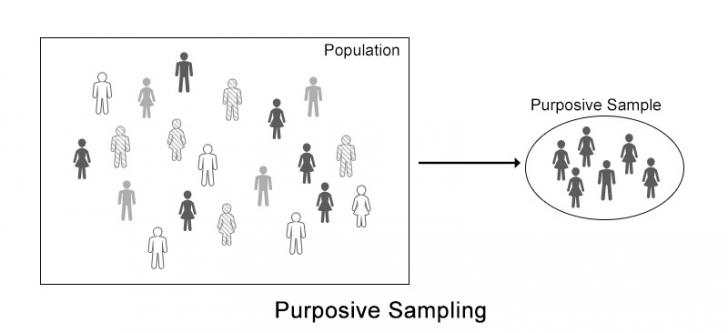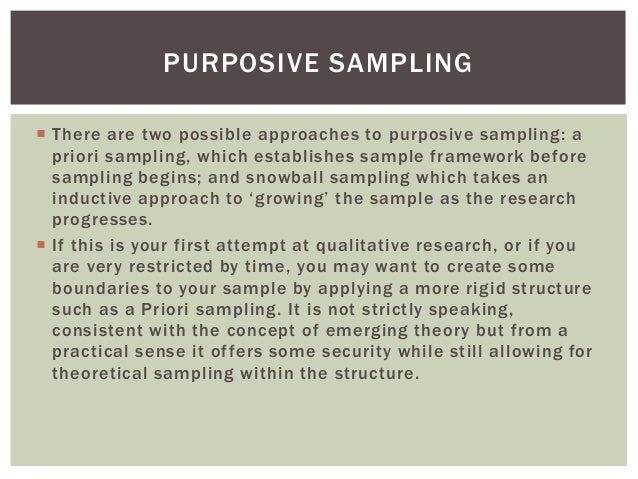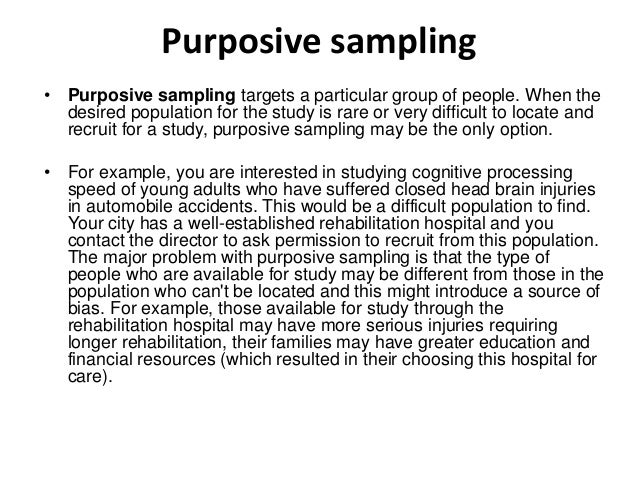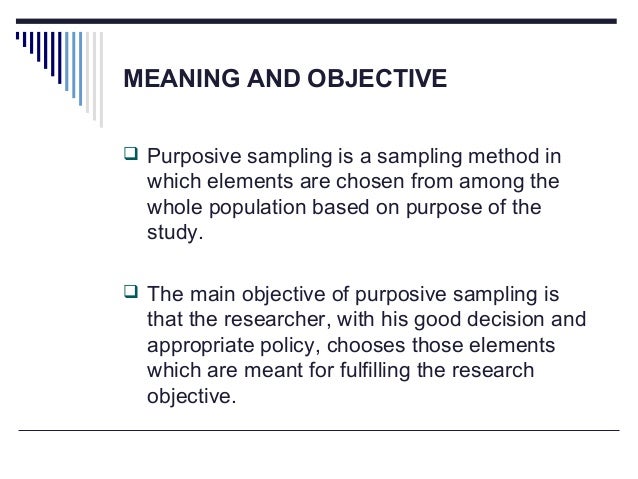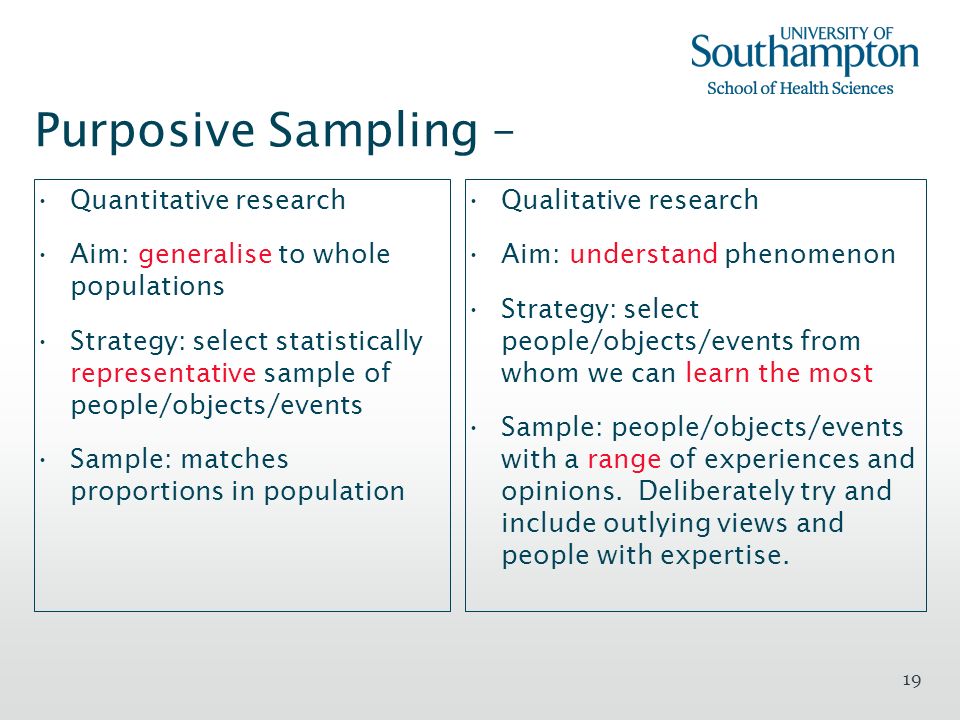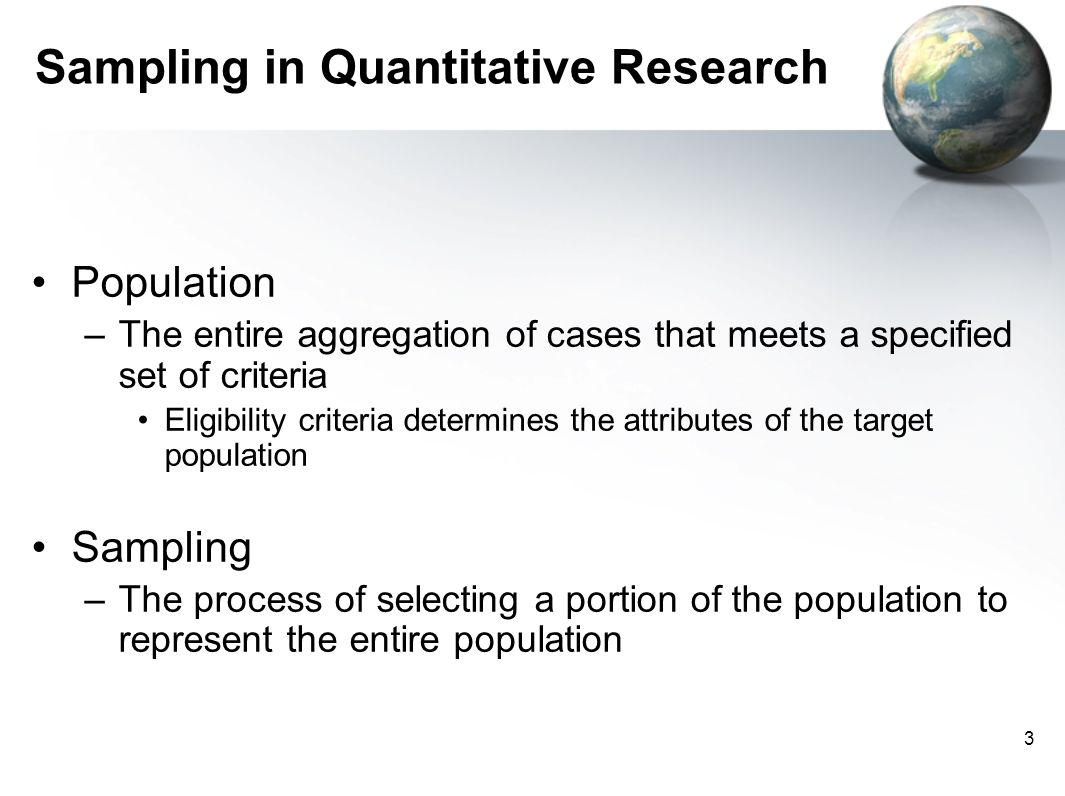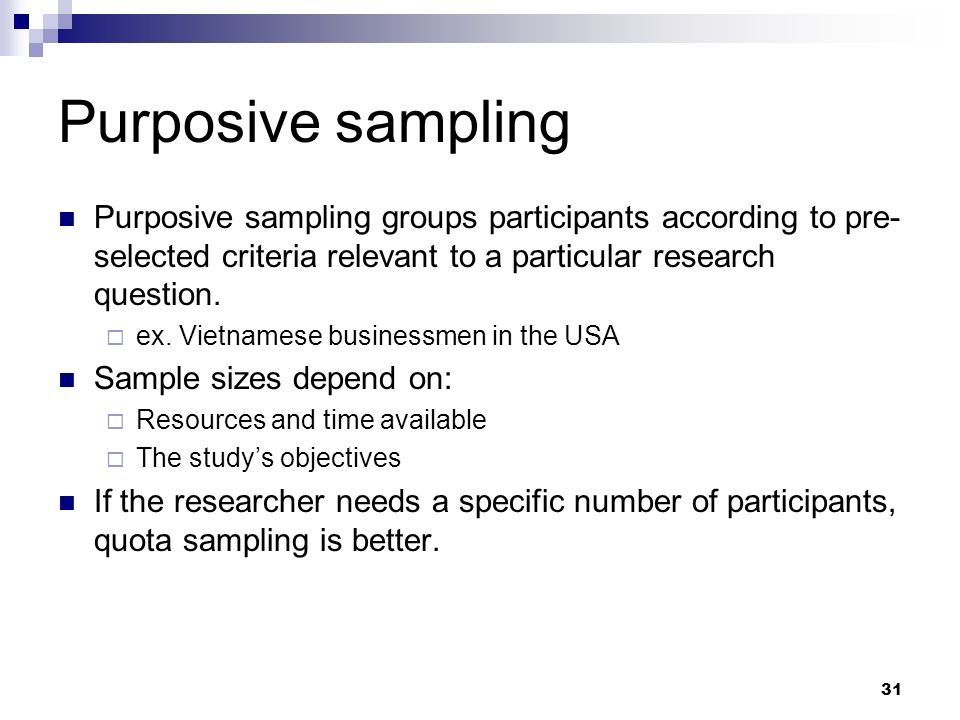Purposive Sampling In Quantitative Research

Simply put purposive sampling is when a researcher chooses specific people within the population to use for a particular study or research project.
Purposive sampling in quantitative research. Unlike random studies which deliberately include a diverse cross section of ages backgrounds and cultures the idea behind purposive sampling is to concentrate on people with particular characteristics who will better be able to assist with the. The purposive sampling technique is a type of non probability sampling that is most effective when one needs to study a certain cultural domain with knowledgeable experts within. According to the type of cases purposive sampling can be divided into the following six categories. Non probability sampling to learn more about non probability sampling and sampling.
The objective of this article is to describe the development and application of a sampling framework for a qualitative evidence synthesis on vaccination communication. In purposive sampling personal judgment needs to be used to choose cases that help answer research questions or achieve research objectives. Purposive sampling also known as judgmental selective or subjective sampling is a type of non probability sampling technique non probability sampling focuses on sampling techniques where the units that are investigated are based on the judgement of the researcher see our articles. Researchers are able to draw upon a wide range of qualitative research designs when their focus is on purposive sampling.
Purposive sampling of primary studies for inclusion in the synthesis is one way of achieving a manageable amount of data. Achieving the goals of these designs often requires a different type of sampling strategy and technique to gather the necessary data to draw a conclusion. Research as people are constantly looked upon for knowl edge and information. In quantitaive analysis you have two techniques such as parametric and non parametric techniques involved.
Purposive sampling may also be used with both qualitative and quantitative re.
